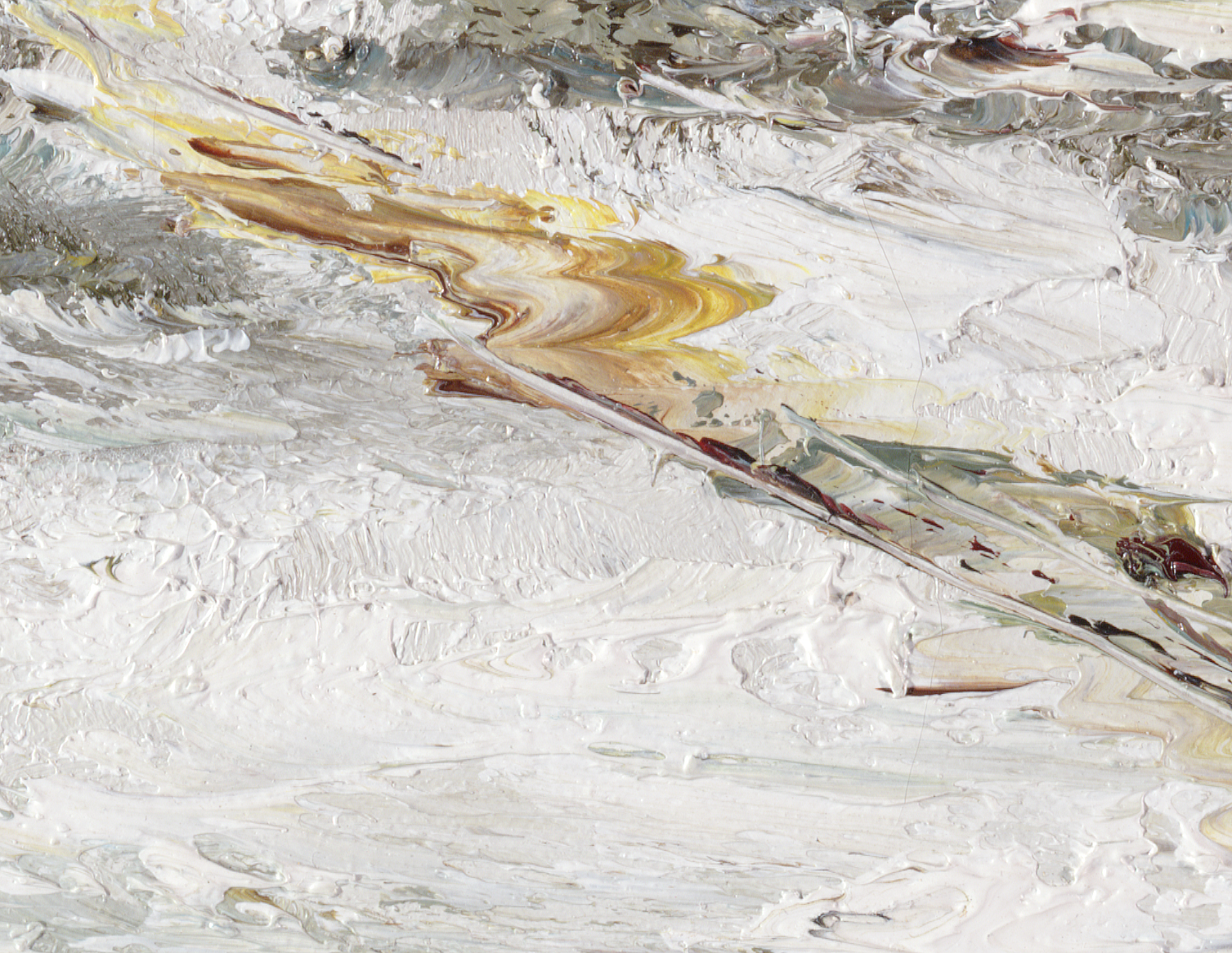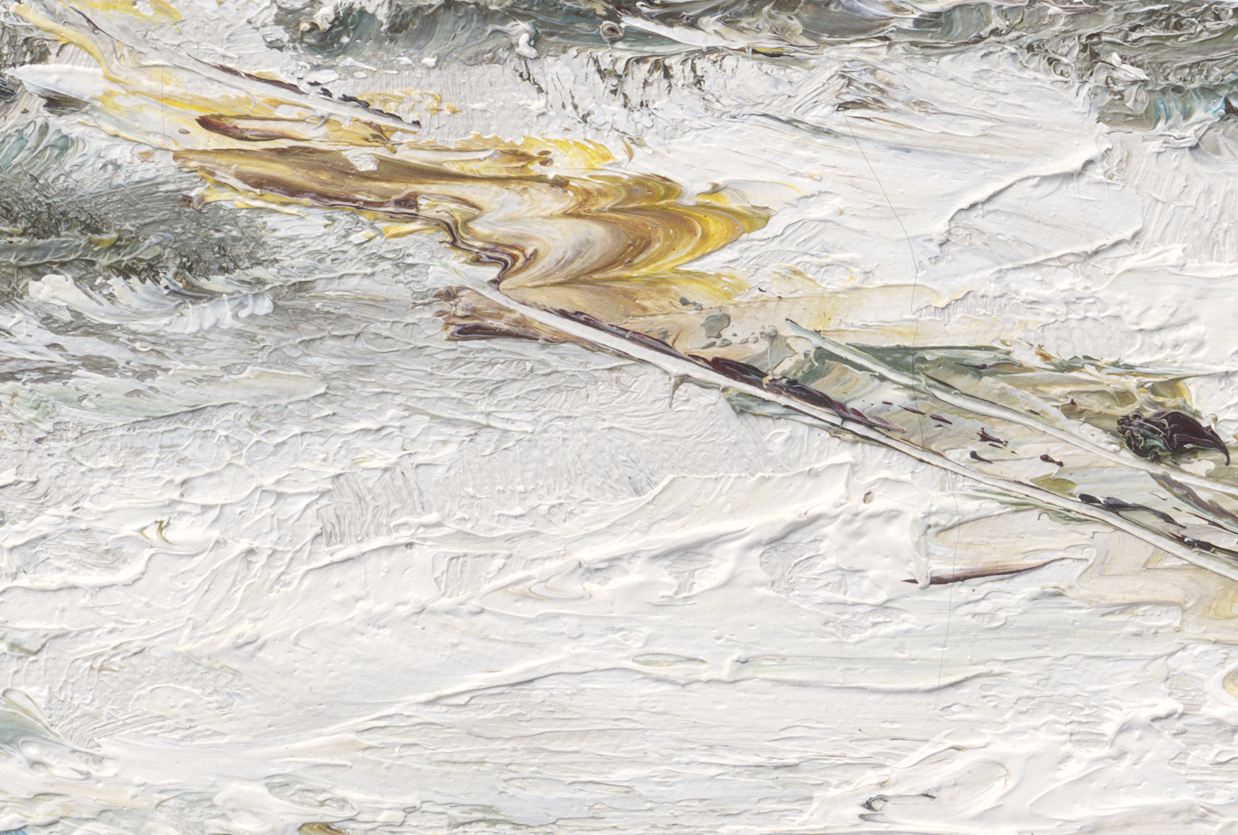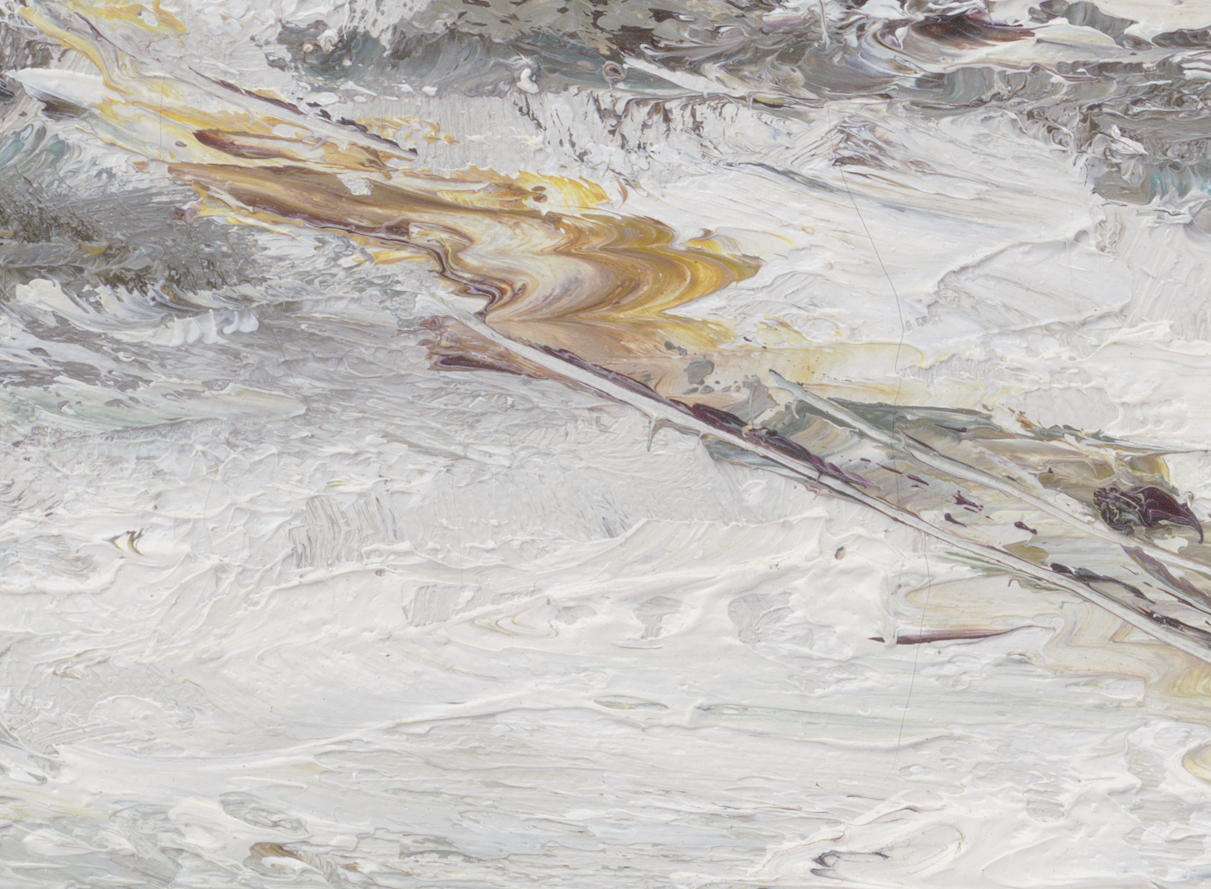Everything you’ve been told about how to light paintings is wrong.
Traditional fine art reproduction standards use lights mounted at a 45 degree angle from the baseboard, generally a high-intensity light aimed so that the work on the board is lit as evenly as possible. Whether the light is a studio strobe, an HID (high intensity discharge) bulb, or a continuous-spectrum florescent, the light source, including the reflector and diffusers (if used), is relatively small, compared to the work. Here’s what it will typically look like:
You’re essentially lighting the painting from two sides, evenly. This creates a shadow on both sides of any part of the painting that has any depth- generally brush strokes. It’s a basic principle of studio lighting… for every light source you add, you’re adding another shadow. Here’s what a detail of that type of lighting produces:
(Capture with Betterlight S8K2)
The impression of the image is that the brush strokes are confused- they’re hard to read, and hard to gauge the depth and direction of each stroke. The contrast is relatively high, and the color saturation is also high, something we’ll go into later, but primarily due to the small diameter of the light source relative to the textures being lit.
When viewing the painting, almost any gallery, museum or other display will have quartz down-spots lighting the piece. A typical museum will have a combination of soft ceiling-wide lights in a mock-skylight and quartz or HID downspots trained on the painting. This gives you a significantly different sense of the work, since each brush stroke is lit from the top, with a shadow below it. It’s easy to read, it is clear what the depth and texture of the painting has, and it contributes to an good interpretation of what the artist intended. Using similar lighting, we can reproduce that painting with the same feel of a museum viewing experience. Here’s an example of that:
(Capture with Cruse Synchron CS220-110, L Textured lighting)
This is a significantly different interpretation of the painting. First, the surface of the painting has modeling. We can see where the top and bottom of a stroke is, and we can literally feel the depth of the paint on the canvas. Second, the contrast and color are significantly more subtle, largely due to the relative size of the light source on the Cruse camera. The Cruse uses a bank of daylight-balanced florescent lights, which produce a relatively soft, diffuse, but perfectly even and directional light source.
The result is a viewing experience that’s far closer to viewing the actual painting in a carefully lit environment. There is simply no case where you will see any painting lit in the standard copy-reproduction lighting formula- from both sides by harsh, direct lighting. This traditional wisdom dictating fine art lighting is simply wrong. It’s a completely artificial method of lighting artwork, devised from a technical standpoint of lighting work evenly within the limitations of the tools which were available, but not at all considering the experiential considerations of the reproduction process.
That is, traditional fine-art lighting completely ignores how the photographic process will change the viewers experience of the subject.
This can be taken one step further. Consider the light under which the artist created the work.
Historically, painters worked in what’s known as the “North-light studio”, or, a studio lit primarily by a bank of large windows on the North wall of the studio and a north-facing skylight. Since this prevents direct sun from entering the studio it yields a large, soft, even light source, relatively consistent throughout the day, and was by far the most common environment for painters even well into the mid-20th century. This is even true for landscape painters, who would typically make their research sketches in the field, then return to their studios to create the final painting.
This large, soft and predominantly “cool” light source gave a significantly different impression to a painting than what we’re familiar with. Here’s a simulation of what that would look like, captured with the Cruse camera with the softest lighting possible:
(Capture with Cruse Synchron CS220-110- LR even lighting)
This is probably what the artist saw when creating the painting… or as near as we can recreate it in a fine-art reproduction environment. It’s a significantly different experience, and it’s entirely due to the lighting used to capture the work.
Using the Cruse system to reproduce art work is far more than a simple, traditional copy/repro technique. Because it gives such complete control over the quality of lighting, creating faithful reproductions of original art is much more than a reprographic process.
It’s a photographic process.



